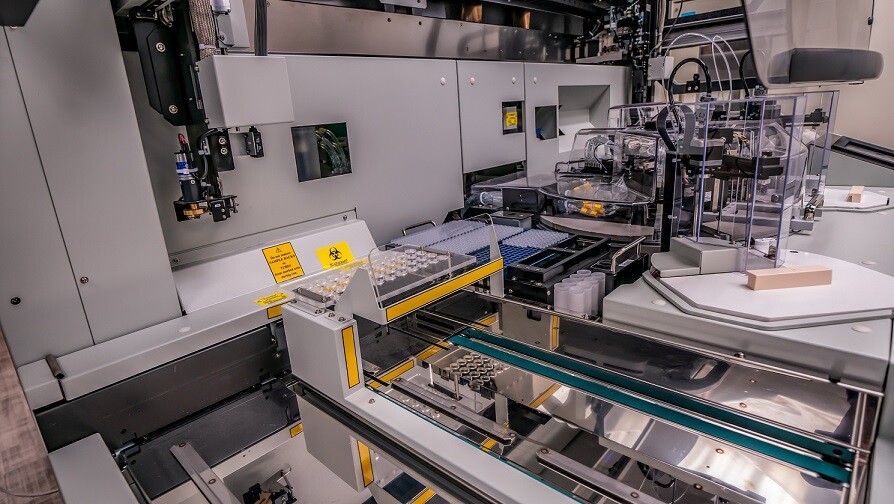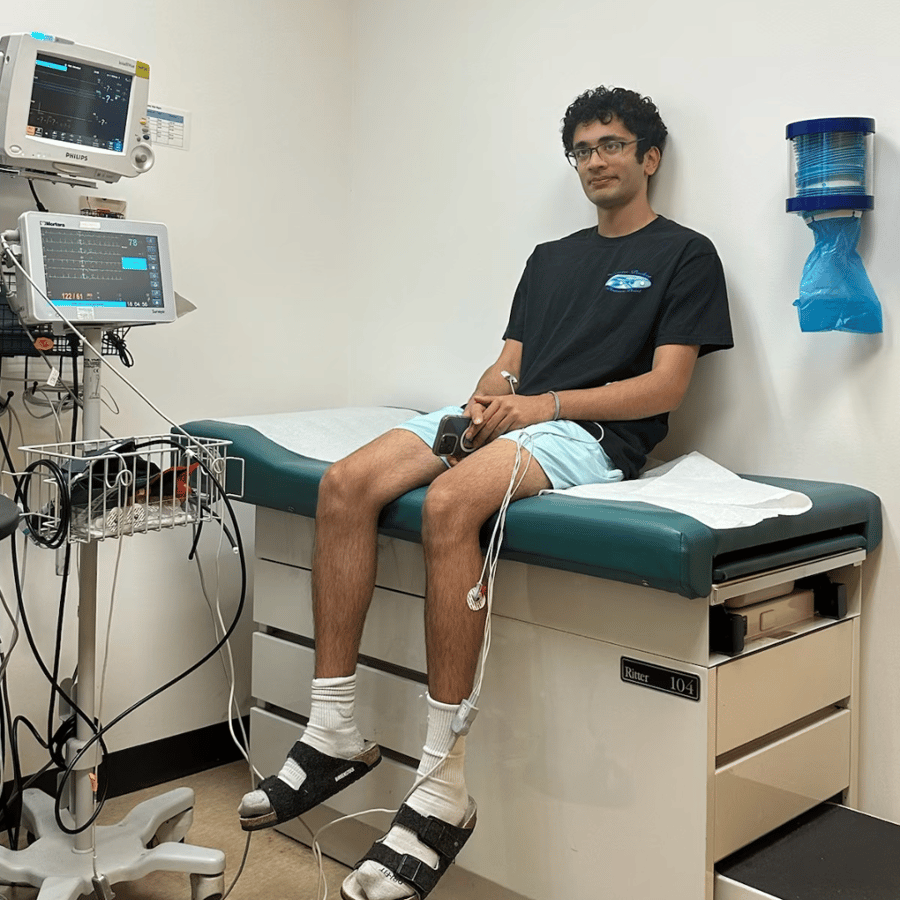TPIRC: Revolutionizing Orphan Disease Research and Treatment
Amidst the complex landscape of healthcare, where patients grappling with rare and orphan diseases often find themselves overlooked by traditional treatment paradigms, The Translational Pulmonary and Immunology Research Center (TPIRC) emerges as a beacon of hope. Established in 2015 by the visionary Dr. Inderpal Randhawa, TPIRC stands as a testament to the power of innovation and patient-centric care in tackling the most challenging medical conditions.
Paving The Way For Orphan diseases
Leading the charge in TPIRC's research facility is Dr. Nathan Marsteller, a molecular biologist with a passion for unraveling the mysteries of the immune system and orphan diseases. Marsteller's expertise, honed at prestigious institutions like the Food Allergy Research and Resource Program (FARRP), perfectly complements TPIRC's innovative research model.
Dr. Marsteller's unique background and research expertise are ideally suited for TPIRC's innovative research model. Under his leadership, TPIRC is studying the interactions of the immune system and genetic regulation as they relate to orphan diseases - in particular, allergy and lung development. Nathan Marsteller aims to develop new diagnostic tools to define and understand novel immune biomarkers. As understanding of these biomarkers grows, TPIRC is uniquely positioned to identify the underpinning mechanisms of the orphan diseases we treat- helping patients find solutions today.
tPIRC's Approach
But why is TPIRC’s methodology so important to the discovery and delivery of new approaches to care? To understand this better we need to grasp the current state of medical advancements and its challenges. The traditional models of drug and therapeutic discovery are slow, costly, and inefficient costing 100 times more now than it did in the 50s and we have still yet to develop a single significant gene therapy or a single DNA-based cancer cure. The traditional model relies upon good hypothetical "guesses" by NIH scientists, and pharmaceutical R&D divisions which has not worked at a pace justified for the patient population who desperately needs it.
In contrast to the old way, TPIRC aims to disrupt the medical field. Their approach eliminates the trial-and-error method from processes by utilizing applied mathematics, artificial intelligence, and biomarkers. This approach allows them to tailor treatment options for individuals with the highest statistical likelihood of effectiveness and revolutionize the way we understand and combat these rare conditions. Dr. Randhawa's journey began with a critical examination of conventional treatments for life-threatening food allergies.
Through meticulous study of genetic and environmental factors, he and his team devised a comprehensive, multi-system approach that yielded remarkable success rates in treating thousands of patients with food allergies. This groundbreaking work laid the foundation for TPIRC, where precision medicine and data analytics converge to drive transformative change that aims to help patients more quickly.
.png?width=1200&length=1200&name=Untitled%20design%20(19).png)
the B.A.R.I.C Data loop
The B.A.R.I.C. Data Loop at TPIRC embodies a comprehensive approach to data collection, analysis, and application, serving as the backbone of their mission to drive advancements in the treatment and understanding of orphan diseases. Let's break down each component of B.A.R.I.C.:
Biobank: Serving as a cornerstone of our research efforts, the Biobank is an Institutional Review Board-approved repository of human blood samples and associated data. This centralized resource enables the collection and storage of longitudinal data localized to specific disease states over time. By encompassing clinical, demographic, genetic, and organ-specific data, the Biobank facilitates comprehensive analyses through applied mathematical models. It supports studies across various research areas aligned with TPIRC's work, including food allergies, cystic fibrosis, bronchiectasis, airway inflammatory disorders, and immunodeficiency.
Analytics: Utilizing mixed model analytics and advanced biostatistical analysis, we leverage trillions of data points to develop a deep understanding of disease processes. This approach allows for subgroup analysis based on the isolation of multiple variables, driving insights into disease associations. Our national food allergy diagnostics laboratory, Foundation Labs, integrates real-time diagnostics with data analysis, enabling us to manage the entire data flow seamlessly. This data-driven approach fuels our research processes, leading to continuous study and analysis aimed at advancing scientific discovery and medical advancement.
Research: Our research efforts span basic, translational, and clinical research, all integrated with our analytics model. By leveraging analytics modeling, we eliminate the need for years spent building physical models, resulting in efficient and effective research outcomes. This focused approach generates informatics standards for disease analysis, driving advancements in patient care and treatment discovery.
Informatics: Informatics serves as the backbone of our data development and storage processes within the B.A.R.I.C. Data Loop. Research conducted within this loop builds algorithms and data processes for disease treatment, requiring sophisticated data storage solutions. Our informatics team harnesses over 150 trillion data points through Artificial Intelligence (AI) and machine learning, revealing predictive patterns that lead to advancements in patient care. This integrated approach is continually refined to ensure more precise treatment for our patients.
Clinical Remission: The final step in the B.A.R.I.C. Data Loop involves the clinic-based treatment of patients. Each patient's data serves as their own control, guiding the design of personalized treatment plans based on data models and monitoring. As treatments are calibrated in real-time, patients experience remission at a record pace, with the first of their programs, the Tolerance Induction Program seeing a remarkable 99% program success rate. Moreover, all patient data feeds back into the Biobank, fueling ongoing improvements in precision care.
Through the B.A.R.I.C. Data Loop, TPIRC ensures that patients receive immediate and tailored treatment plans, accelerating their journey toward recovery and underscoring the commitment to rewriting the narrative of medical research and care.
the Tolerance Induction program™ (TIP)
The Tolerance Induction Program™ (TIP), housed within the Food Allergy Institute, stands as one of TPIRC's earliest triumphs. TIP employs biosimilar immunotherapy to retrain the immune system, fostering tolerance to allergenic foods. Under stringent medical supervision within the Food Allergy Institute, participants undergo a structured program aimed at gradually reintroducing allergenic foods into their diets. Through incremental exposure and careful monitoring, TIP retrains the immune system, reducing the risk of severe allergic reactions and ultimately providing individuals with newfound freedom and peace of mind in their dietary choices.
.jpg?width=1200&length=1200&name=Yuma%20with%20Doc%20Wide%20(2).jpg)
In a healthcare landscape plagued by inefficiency and complexity, TPIRC stands as a beacon of hope, pioneering a new era of precision medicine. With a steadfast commitment to advancing treatment discovery and improving patient outcomes, TPIRC, is rewriting the narrative for orphan diseases, one breakthrough at a time.
Subscribe to Our Blog
Related Posts

The Vital Role of Accurate, Comprehensive Testing and Data in Food Allergy Management



